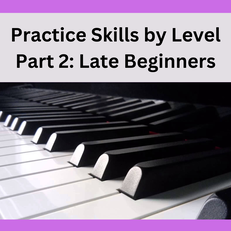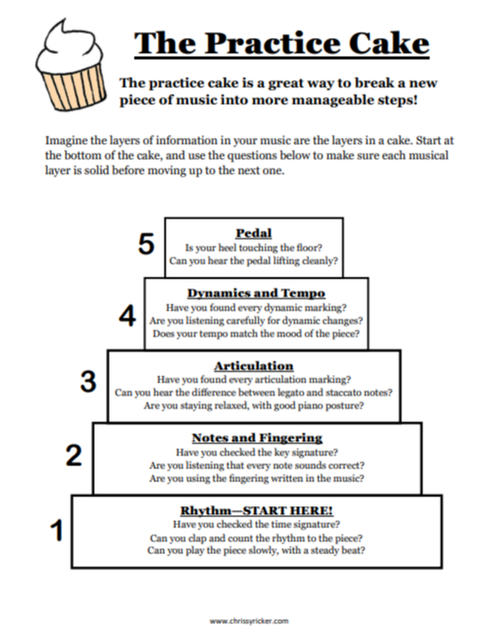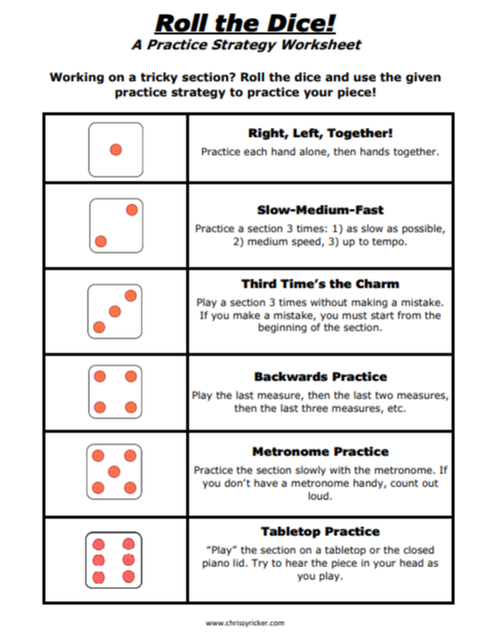
Today's post is the second in a four-part series on teaching practice skills to students at each level of their development. You can read part one on practice skills for beginners HERE.
Today's article is all about practice skills for late beginners! Keep reading to see more...
I would define a late beginner as a student who has been studying piano for one to two years and has reached the beginning of level 2 of most method books. I find that this is the level at which many students start to "plateau" at the piano. Their pieces are becoming longer and more complex, requiring more practice and more attention to detail. As a result, many students become frustrated--which means continuing to develop their practice skills at this level is especially important!
If you followed the tips in my first post on practicing HERE, then hopefully your late beginner now has established a consistent practice routine, has a good idea of what piano practice entails, and has supportive parents who offer help and encouragement at home. Now it's time to take your student's practice routine to the next level!
My strategy for teaching students at this level is: "practice with purpose." If every practice session has a specific purpose, it makes it much easier for students to use their time wisely and to focus on details in the music that they may otherwise overlook.
Here are my best strategies for helping students learn how to practice with purpose:
1. Help students learn how to break down their music into bite-sized pieces.
At this level, I find it can be especially helpful to teach the concept of musical form and how understanding form can help students to break a piece down into smaller sections. A two or three page piece becomes much less overwhelming to practice when students can see that it is made up of just two short contrasting sections.
We also focus on finding repeated musical patterns in the melody, harmony, and rhythm that can help make a piece easier to understand, and therefore easier to practice!
2. Help students learn to spot details in the music.
There is a big jump in musical complexity when students reach the late beginner level. Students are now dealing with not only reading notes and rhythms, but with reading multiple articulations, dynamic symbols, tempo markings, and perhaps even pedaling indications. All of these extra details can be overwhelming for students.
| One of my favorite ways to help students learn to spot details in the music is to use this "practice cake" worksheet. This worksheet walks students through the different types of musical symbols they will be encountering in their music and gives them questions to ask themselves to make sure they are listening carefully to observe each and every marking. Click HERE to get your free copy of the practice cake worksheet! |
Another great practice strategy for late beginners is to assign them a specific goal for each practice session. This can be a good way to not only teach students how to practice with purpose, but also to help them develop their own toolbox of practice goals that they can apply in the future to their other pieces.
For example, our practice goals for a piece with a tricky rhythm might be:
- Day 1: Clap and count the rhythm for m. 1-16.
- Day 2: Practice m. 1-16 hands together, 5 times slowly, while counting carefully.
- Days 3 and 4: Practice m. 1-16, 5 times with the metronome set on 80.
- Days 5 and 6: Practice m. 1-16, 5 times with the metronome set on 100.
4. Choose a specific practice strategy for each practice session.
It is also important to help students develop a toolbox of practice strategies that they can apply to any new piece.
| I created a fun chart to help "gamify" the process of choosing a practice strategy for a piece. Students roll dice and use the corresponding practice strategy to practice their piece for that day. Click HERE to download your free copy of this practice chart! |



 RSS Feed
RSS Feed